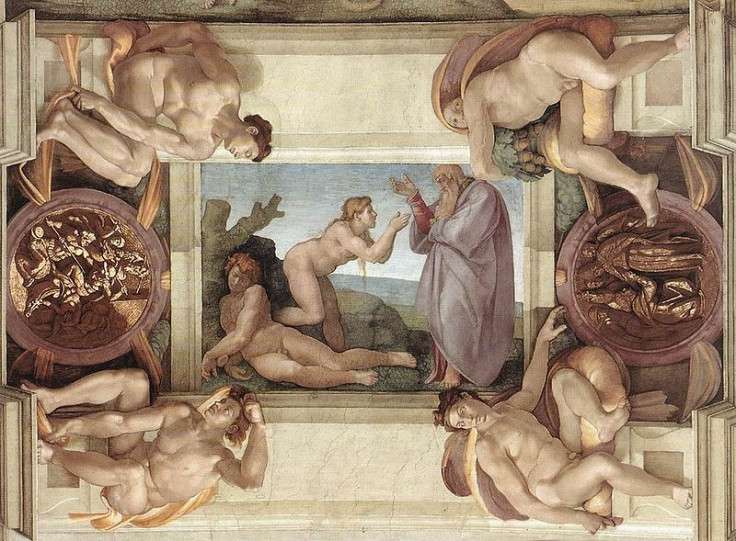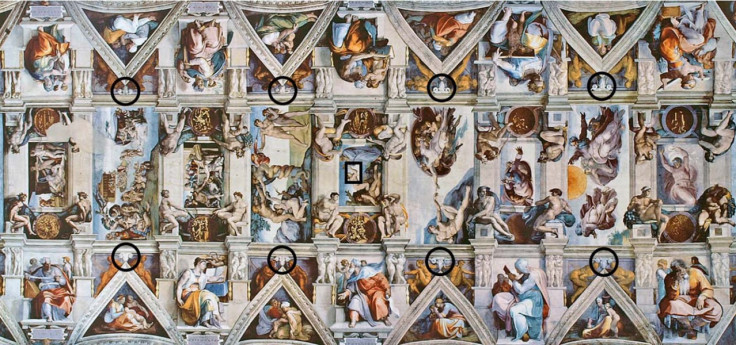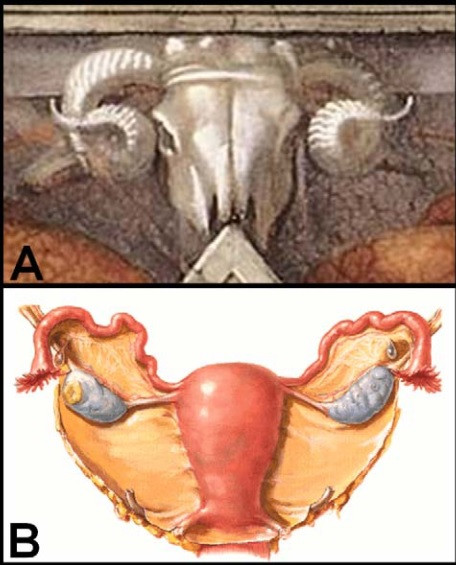Michelangelo secretly painted symbols of female anatomy on Sistine Chapel ceiling
Michelangelo may have hidden symbols as dissection of human body was banned by Catholic Church.
Michelangelo secretly painted symbols of the female anatomy on the ceiling of the Sistine Chapel, a team of researchers have said. In analysing the central fresco, The Creation of Eve, a team led by Deivis de Campos of the UFCSPA in Brazil claims there are several representations of female anatomy the artist likely concealed, potentially as a subversive act and to hide his knowledge of anatomy through dissection.
In their study, published in the journal Clinical Anatomy, the team notes that much Renaissance art contains an inner meaning – including animals depicted, positions of characters and juxtapositions. Michelangelo, as an anatomist, may have felt the need to conceal elements of his paintings via symbols.

The team used imaging software to analyse the ceiling of the Sistine Chapel to look for representations of human anatomy. Depictions of female anatomy are normally associated with a downward pointing triangle, while those for males would be upwards pointing.
They found the position of Eve's arm and forearm "clearly resembles the shape of an inverted triangle ... thus, in the exact centre of the Sistine Chapel's ceiling ... Michelangelo may have placed a notorious pagan female symbol".

This inverted triangle shape is found in several other areas of the painting, including the presence of bull or ram skulls in the central section – the meaning of which has never been explained. According to their hypothesis, the team says these skulls "directly related to the figure of the female internal anatomy".
Researchers believe Michelangelo included these symbols as a subversion to the Church – similar to the way he includes Jewish heroes and themes throughout. "Michelangelo idolised all the teachings associated with the sacred feminine," they wrote. "This is because the power of women and their ability to produce life was held very sacred in ancient pagan and Jewish teachings.

"However, this threatened the rise of the predominantly male Catholic Church. Thus, we postulate that Michelangelo concealed the symbols associated with female anatomy because he knew that the Pope would never favour such representations."
Furthermore, at the time of painting the Sistine Chapel, the Catholic Church had banned dissection of the human body as it "was considered a divine mystery". It is known Michelangelo would have studied dissected cadavers, so he may have used symbol form to represent anatomical features.
"In times of intolerance and religious persecution, art almost never dared to openly express what the artist was eager to communicate," the authors observed. "Codes, hidden allusions, symbols and veiled references that were understandable only to a very small circle of contemporaries were the only recourse available to those who broke with the traditional dogmas of the time."
They concluded: "Like other Renaissance artists of his time, Michelangelo often introduced anatomic figures, sexual innuendos and rude insults to patrons without them being aware. For him, Christianity was not superior to any other form of religion. Michelangelo may have concealed symbols associated with female anatomy to actually exalt the female image that was widely neglected by the Catholic Church."
© Copyright IBTimes 2025. All rights reserved.






















